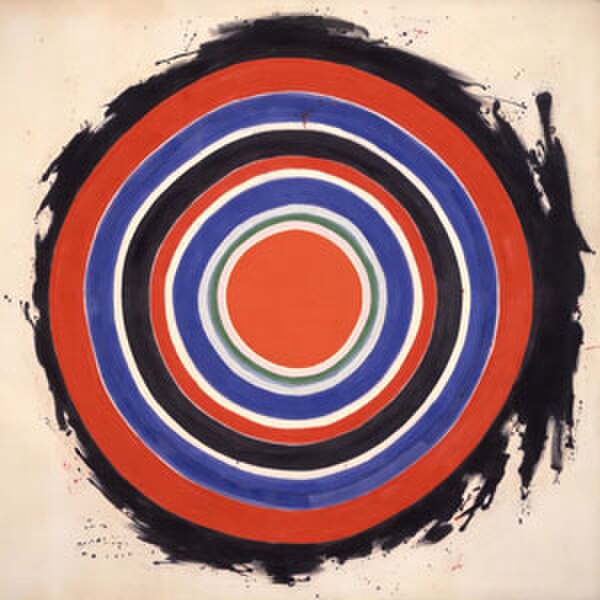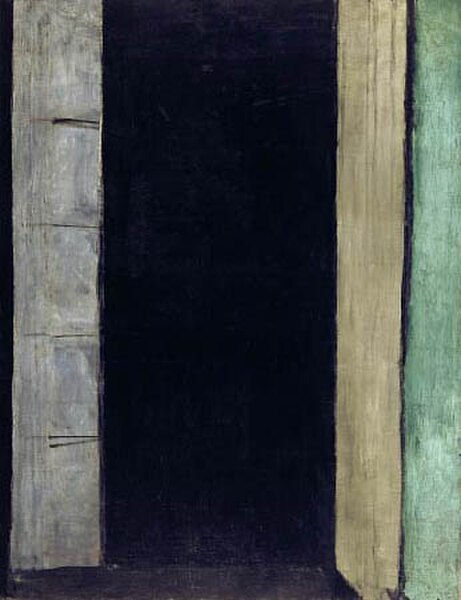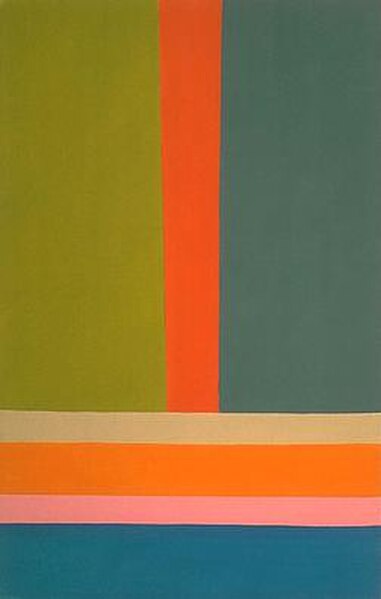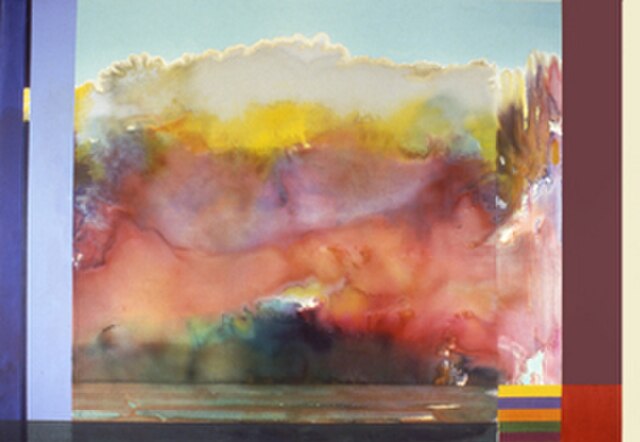Kenneth Noland was an American painter. He was one of the best-known American color field painters, although in the 1950s he was thought of as an abstract expressionist and in the early 1960s as a minimalist painter. Noland helped establish the Washington Color School movement. In 1977, he was honored with a major retrospective at the Solomon R. Guggenheim Museum in New York that then traveled to the Hirshhorn Museum and Sculpture Garden in Washington, D.C., and Ohio's Toledo Museum of Art in 1978. In 2006, Noland's Stripe Paintings were exhibited at the Tate in London.
Kenneth Noland
Beginning (1958) at the Hirshhorn Museum and Sculpture Garden
The Clown (1959) at the National Gallery of Art in 2022
Color field painting is a style of abstract painting that emerged in New York City during the 1940s and 1950s. It was inspired by European modernism and closely related to abstract expressionism, while many of its notable early proponents were among the pioneering abstract expressionists. Color field is characterized primarily by large fields of flat, solid color spread across or stained into the canvas creating areas of unbroken surface and a flat picture plane. The movement places less emphasis on gesture, brushstrokes and action in favor of an overall consistency of form and process. In color field painting "color is freed from objective context and becomes the subject in itself."
Kenneth Noland, Beginning, 1958, magna on canvas painting, Hirshhorn Museum and Sculpture Garden. Working in Washington, D.C., Noland was a pioneer of the color field movement in the late 1950s.
Henri Matisse, Porte-fenêtre à Collioure (French Window at Collioure), 1914, Centre Georges Pompidou, "Throughout my life, the 20th-century painter whom I've admired the most has been Matisse", Robert Motherwell 1970.
Jack Bush, Big A, 1968. Bush was a Canadian abstract expressionist painter, born in Toronto, Ontario in 1909. He became closely tied to the two movements that grew out of the efforts of the abstract expressionists: color field painting and lyrical abstraction.
Ronnie Landfield, Rite of Spring, 1985. Landfield's work emerged during the 1960s. His works are reflections of both Chinese landscape painting and the color field idiom. His paintings bridge color field painting with lyrical abstraction.






